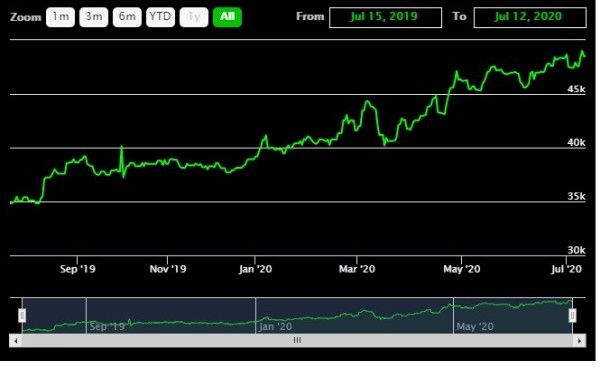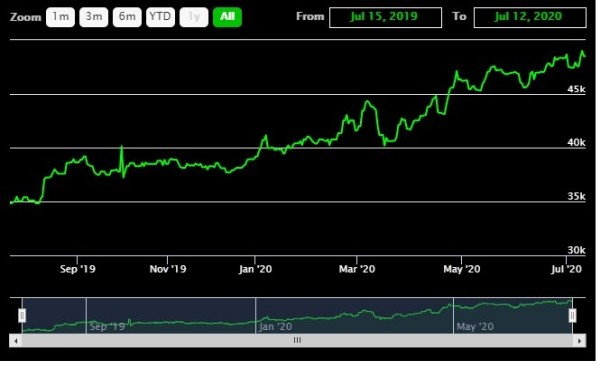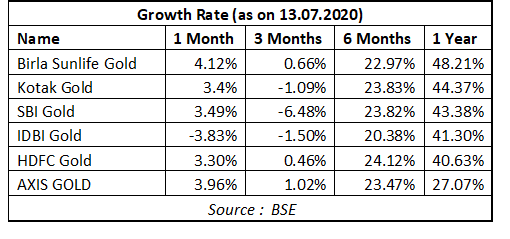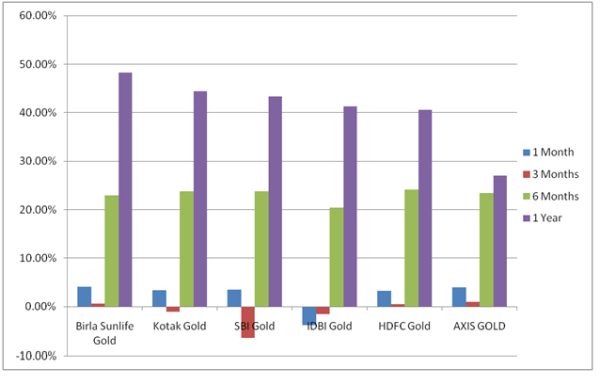Understanding the relationship between Gold and the Economy
Historically, it has been observed that, gold prices indirectly mirror the state of the economy the relationship being inversely proportional. During an economic crisis, investors prefer to buy gold as a form of protection. Fear, uncertainty and speculation in the current economic situation has played a huge impact on driving the demand for gold.
Furthermore, the vacuum created due to the non reliability of bonds as a safe investment option is now being quickly filled up by gold, due to its anti-inflationary characteristic, providing investors the much needed insulation from market volatility.
Currently being traded at Rs. 50,880 (10g of 24KT Gold in Mumbai) it is likely to touch the mark of Rs.55,000 by the end of 2020 (as per market estimates) or perhaps even earlier due to its dynamic, upward moving trajectory. One of the biggest signs of the Indian public's confidence and ever growing demand for the commodity was witnessed in April, during the early phases of the nationwide lock down, when gold's market value reached at an all time high, twice, within the month of April 2020 itself.

The trend observed (Year To Date):

(Source: https://www.goodreturns.in/)
Further breaking down the analysis over the past 6 months (taking into consideration the drastic changes due to the outbreak of covid-19)

(Source: https://www.goodreturns.in/)
Bhavik Patel, Senior Technical Analyst, Tradebulls Securities stated,". . . lower interest rate, lower bond yields, risk aversion sentiment, fiscal and monetary stimulus, inflationary pressure due to constrained supply chain, you name it- all these reasons point to the fact that gold will go up."
Gold ETFs: The Practical Route for Investing in Gold
ETFs stands for Exchange Traded Funds. ETF is a hybrid market instrument, introduced into the Indian markets in the early 2000s and has gained huge popularity over a period of time, due to its uniqueness. It combines the features of a mutual fund with that of a tradable stock.
By investing in gold, through ETFs, not only are we able to fulfill our investment objectives, but also ensure flexibility as it enables one to trade in gold like a normal stock in a stock exchange, deriving its value solely from the ongoing market price of gold.
1 Gold ETF being equivalent to 1 gram of gold.
Advantages of investing in Gold ETFs:
1. No jewellery making charges, custody and security charges or jeweller margin payable.
2. No taxes involved while purchasing Gold ETFs such as - Wealth Tax, Security Transaction Tax, or GST.
3. No entry or exit load payable, as in the case of regular mutual funds.
4. High liquidity.
5. Cost-efficient and secure way to access the gold market by providing a return equivalent to movements in the gold spot price, less the relevant management fees
6. Redeeming the funds invested in Gold ETFs is a rather simple, clear and transparent process, unlike physical gold which can get tricky.
7. Ensures a diversified and hedged portfolio.
8. Investor pocket- friendly, as even an amateur investor can start off by purchasing only a single unit of ETF rather than a huge lump sum amount. It is advisable to invest small amounts on a monthly basis.
Nature of Investment (Quantum & preferred ETFs)
Every pragmatic investor shall maintain a diversified portfolio, as the clichéd, but true putting all eggs in one basket can prove to be dangerous. However, an individual's allocation to various types of assets in its portfolio depends on his risk appetite, risk taking capacity, financial objectives and needs. Hence, the ratio of investment in equity assets and fixed income assets may differ from investor to investor.
However, taking into account the general consensus of market experts, it is advisable to invest a minimum of 10-15% of one's total investment capacity in gold, via Gold ETFs. As stated above, lump sum investment is not advisable rather a small amount can be invested on a monthly basis, like in the case of SIPs.
While choosing which Gold ETF to invest in, the following parameters should be considered:
• Growth rate of the ETF unit, throughout various time horizons (1 month, 3 months, 6 months, 1 year and 3 years for a detailed analysis)
• NAV (Net Asset Value)
• ETF with minimum tracking error (tracking of the underlying index)
• Volume of trading activity - volume is representative of liquidity of the ETF.
• Assets Under Management (AUM) - Higher AUM implies higher reliability.
Growth statistics of the best performing Gold ETFs:


Taxability

Unlike Sovereign Gold Bonds, Gold ETFs are a taxable capital asset. Its taxability is identical to that of debt funds. Hence the minimum holding period is 3 years.
Gold, has for the longest time, been one of the most traditional symbols of personal wealth and security. India alone, accounts for nearly 1/3rd of the total global demand. Not only that, the precious stone has time and again proven to be a prudent, safer and profitable investment instrument, and will continue to be so in the long run, as market uncertainties' and volatility are here to stay, owing to the continuous integration of the world economy and ETFs provide a practical route for such investment needs.







 CAclubindia
CAclubindia
